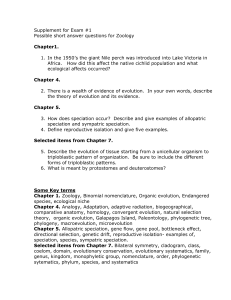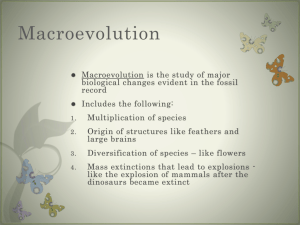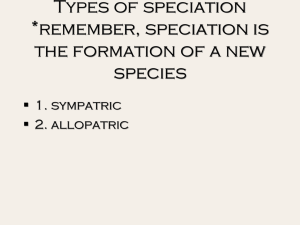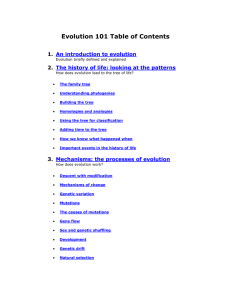Exam Review: Origins How do biologists define life? Provide an
advertisement
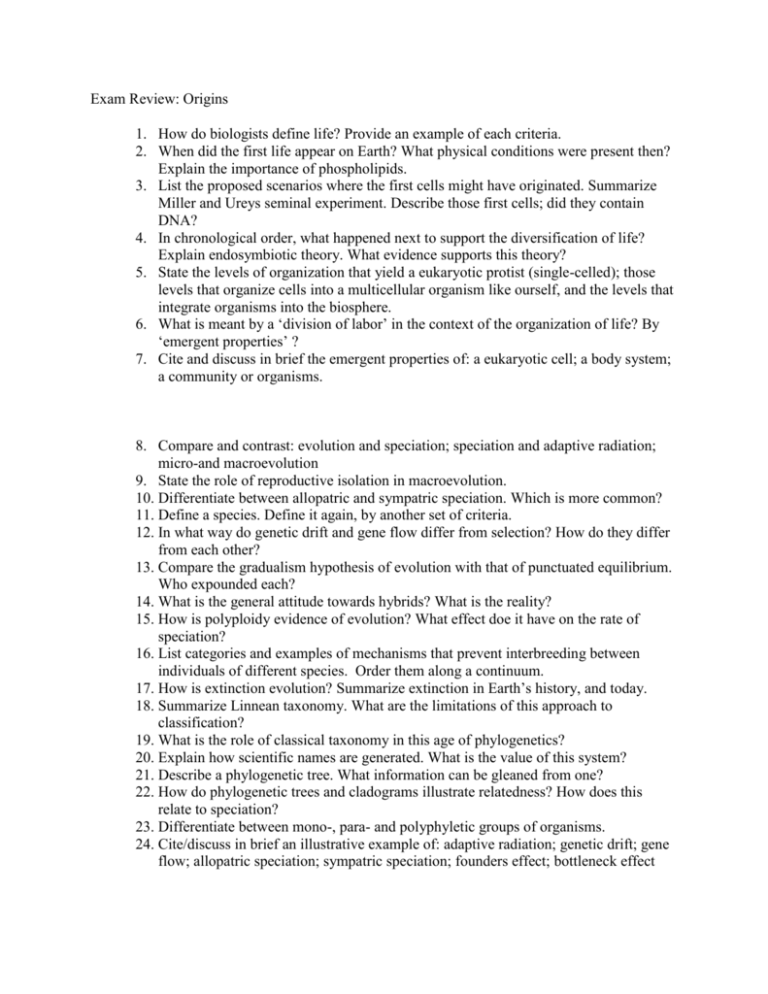
Exam Review: Origins 1. How do biologists define life? Provide an example of each criteria. 2. When did the first life appear on Earth? What physical conditions were present then? Explain the importance of phospholipids. 3. List the proposed scenarios where the first cells might have originated. Summarize Miller and Ureys seminal experiment. Describe those first cells; did they contain DNA? 4. In chronological order, what happened next to support the diversification of life? Explain endosymbiotic theory. What evidence supports this theory? 5. State the levels of organization that yield a eukaryotic protist (single-celled); those levels that organize cells into a multicellular organism like ourself, and the levels that integrate organisms into the biosphere. 6. What is meant by a ‘division of labor’ in the context of the organization of life? By ‘emergent properties’ ? 7. Cite and discuss in brief the emergent properties of: a eukaryotic cell; a body system; a community or organisms. 8. Compare and contrast: evolution and speciation; speciation and adaptive radiation; micro-and macroevolution 9. State the role of reproductive isolation in macroevolution. 10. Differentiate between allopatric and sympatric speciation. Which is more common? 11. Define a species. Define it again, by another set of criteria. 12. In what way do genetic drift and gene flow differ from selection? How do they differ from each other? 13. Compare the gradualism hypothesis of evolution with that of punctuated equilibrium. Who expounded each? 14. What is the general attitude towards hybrids? What is the reality? 15. How is polyploidy evidence of evolution? What effect doe it have on the rate of speciation? 16. List categories and examples of mechanisms that prevent interbreeding between individuals of different species. Order them along a continuum. 17. How is extinction evolution? Summarize extinction in Earth’s history, and today. 18. Summarize Linnean taxonomy. What are the limitations of this approach to classification? 19. What is the role of classical taxonomy in this age of phylogenetics? 20. Explain how scientific names are generated. What is the value of this system? 21. Describe a phylogenetic tree. What information can be gleaned from one? 22. How do phylogenetic trees and cladograms illustrate relatedness? How does this relate to speciation? 23. Differentiate between mono-, para- and polyphyletic groups of organisms. 24. Cite/discuss in brief an illustrative example of: adaptive radiation; genetic drift; gene flow; allopatric speciation; sympatric speciation; founders effect; bottleneck effect

